How Easy is It to Replace a Macbook Pro Screen
Black screen on MacBook Pro? Here's how to fix it
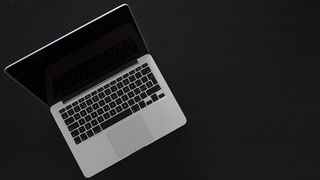
A black screen on MacBook Pro is one of the most dreaded situations you can face when you boot up ready to begin work. As with any laptop, or desktop computer for that matter, a lack of any sign of activity on the screen can be severely disconcerting, and when it comes to a MacBook Pro, you might quickly start wondering how much it will cost to repair. However, while a MacBook Pro black screen can sometimes be very bad news, in many cases it's not a big deal and can be fixed fairly easily.
In the guide below, we'll run through a series of steps that you can try if you're faced with a black screen on MacBook Pro. A blank screen, be it black, grey, or blue, should appear once or more during startup of your device, but if your MacBook appears to be stuck on a blank screen, these are the steps to try. Work your way through them and hopefully your screen will come back to life, allowing you to get on with your work.
If you want to gain larger screen real estate for your Apple laptop, make sure you see our guide the best monitors for MacBook Pro. And if you're looking to upgrade your laptop, see our round up of the best MacBook Pro deals.
How to fix a black screen on MacBook Pro
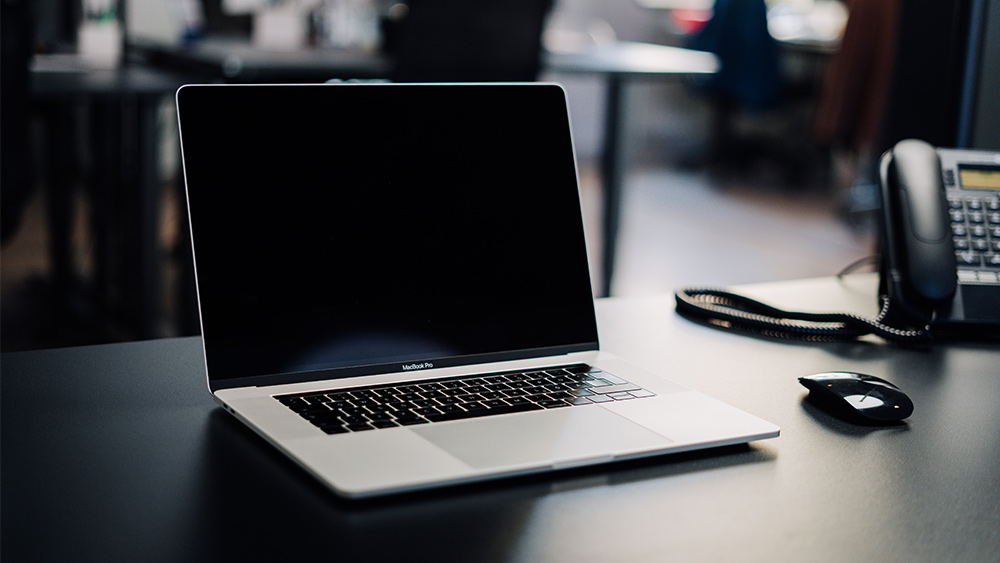
Any number of issues can cause a MacBook Pro black screen. Sometimes it can happen waking your laptop from sleep, and sometimes it can be caused by broke disk permissions or a software error. Below we'll outline the steps to try if the problem is a black, or otherwise blank screen, on your MacBook Pro's own display. If your problem is with an external monitor, skip to how to fix a black screen on a MacBook Pro external monitor.
01. Check the power and brightness level
OK, so you've probably done this, but just to be sure check the power. It can be a big relief to discover the issue is something as simple as this. If you're running on battery, connect your laptop to its charger just in case the battery has run down. Check the power indicator light shows so you can rule out a faulty power cable. It's also possible that you (or your cat) might have unintentionally hit the brightness keys on the keyboard at some point at that you screen is simply dimmed. Hit F2 or use the control bar to try increasing the brightness on your MacBook Pro.
02. Unplug any accessories
Peripheral devices like printers, keyboards, external drives, mice and trackpads can all cause potential start up problems, so if the problem's still there make sure your Mac is disconnected from anything other than your charging cable and adapter.
03. Restart your MacBook Pro
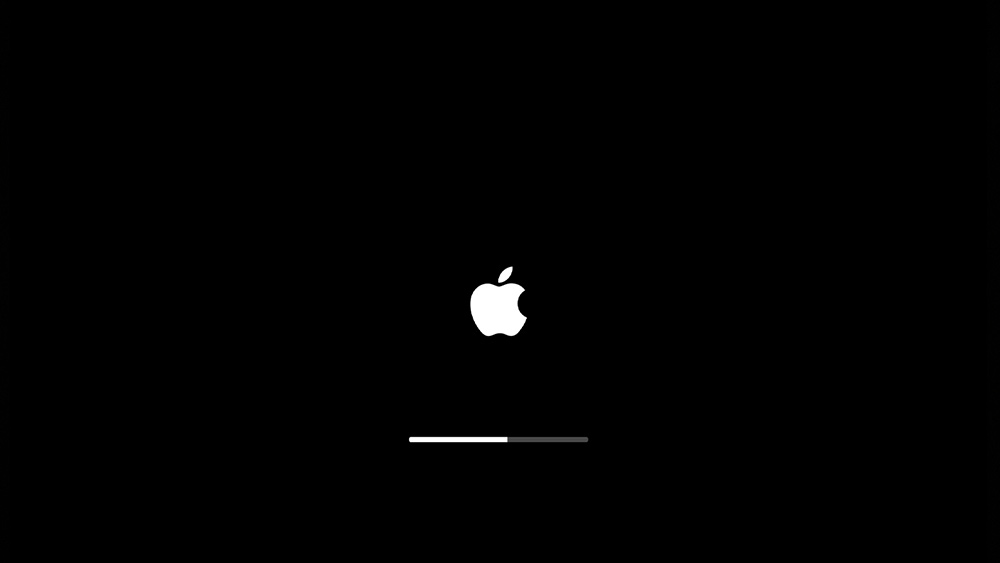
If you've confirmed that the laptop is receiving power and you've ruled out the possibility of interference from peripheral devices, the next thing to try is a simple restart. Pressing Control + Command (the symbol with four loops) + Power/Eject/Touch ID button (depending on your model) should automatically restart your device. Alternatively, hold the power button for 5 seconds to shut down your MacBook Pro, wait 15 seconds and then press the button again to reboot. Fingers crossed.
04. Perform a MacBook Pro hard restart
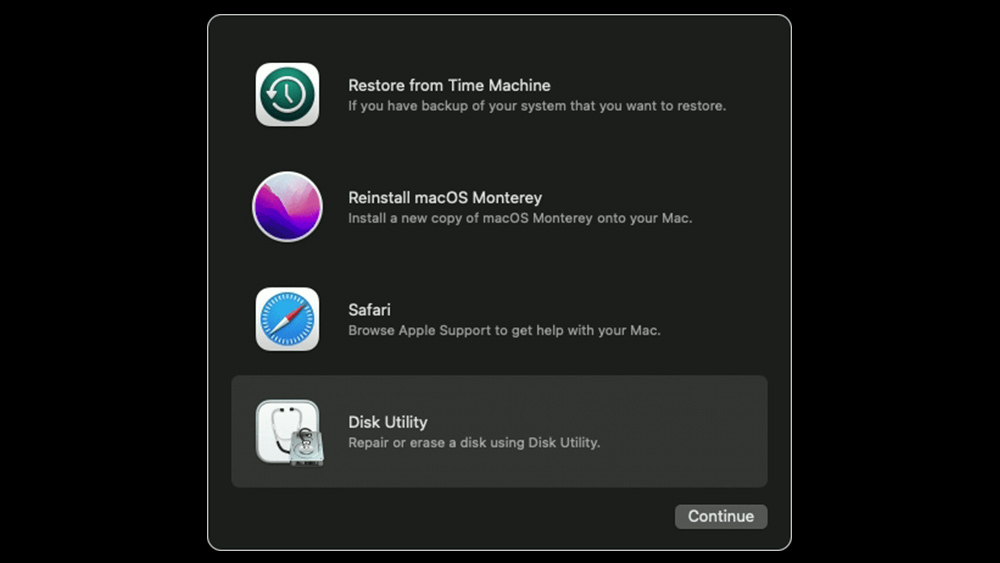
Still no luck? Then try a forced reset. Sometimes a good old-fashioned hard restart is all it takes to fix all kinds of MacBook issues. On an Apple-chipped MacBook Pro (M1, M1 Pro, M1 Max), press and hold the power button for about 10 seconds. You should see the startup options window, which includes a gear icon labelled Options. Select Options and Continue. If the options window doesn't appeal, release the power button, and press and hold it again for another 10 seconds.
On an Intel-chipped MacBook Pro, press and hold the power button for about 10 seconds, then press and release the power button and immediately press and hold Command + R until you see an Apple logo or other image. If you still see a blank screen after about 20 seconds, it's time to move on. If this does recovers your screen, it's worth running Disk Utility to check for errors. If Disk Utility finds errors and repair them, restart your MacBook again afterwards.
05. Try this MacBook Pro key sequence
This isn't official from Apple, but years of MacBook lore claim that a particular key sequence can sometimes revive a non-reacting blank MacBook Pro screen. Press power button once, Press 'S' (the sleep hotkey), and then hold the power button to perform a hard shut down. Wait 15 seconds and press the button to restart. We have no idea why this works, but plenty of people have vouched for it.
06. Boot up you MacBook Pro in Safe Mode
MacBook Pro Safe Mode allows you to start you MacBook without other launch agents booting up. This can eliminate the potential for issues with other apps and services interfering and preventing your screen from displaying correctly.
To boot into Safe Mode, power off and let your MacBook Pro sit for 20 seconds. Turn it on again and immediately hold down the Shift key. Release the Shift key when the login window appears. You should see 'Safe Boot' in the upper right corner of the window. Sometimes you may be asked to login twice, and your computer may take a longer than usual to start while it carries out diagnostics. After it's completely booted up, you can restart again in normal startup and see if the black screen is fixed.
07. Reset NVRAM/PRAM
If that doesn't work, it's time to start turning to more technical solutions. NVRAM (non-volatile random-access memory) and PRAM (Parameter RAM) are small memory partitions that store settings like volume control and display resolution. Sometimes they encounter issues and require resetting. To do that, power down then hit the power button again to boot up you MacBook. Immediately hold down Option + Command + P + R at the same time while the machine boots, and keep holding them down until you hear the startup chime (around 2 seconds)
Note that you may lose some of your settings by doing this, so if this does solve the issue, check you system preferences afterwards to make sure your date/time, display and disk options are correct.
08. Reset System Management Controller settings
The Mac's Systems Management Controller (SMC) controls things like temperature, keyboard, display and fans. Resetting the SMC is another possible quick fix to resolve a black screen on MacBook Pro. Turn of your MacBook and unplug it for at least 15 seconds before plugging in again. Then, with the power still off, hold down Shift + Option + Control + the power button all together. Release the keys when your MacBook starts booting up.
09. Reinstall MacOS
As a very last resort you may need to reinstall MacOS, but note that this will mean effectively reverting to a new Mac. You may want to contact Apple support before going to this resort. While you can non-destructively reinstall macOS without deleting files, we recommend always backing up your files and folders to an external hard drive or to the cloud in order to be prepared for this eventuality.
How to fix a black screen on a MacBook Pro external monitor
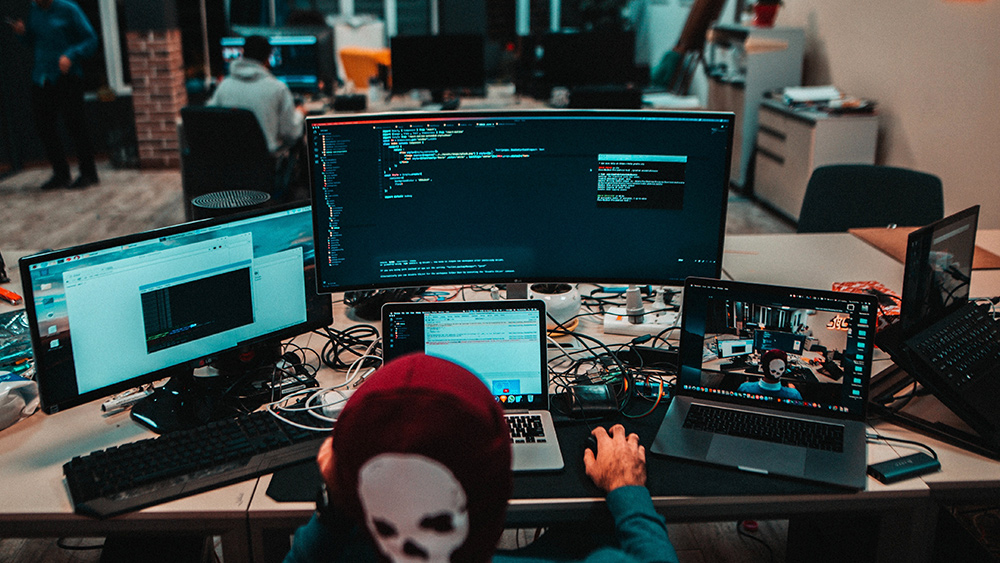
The steps above should help you resolve a MacBook Pro black screen, but if your laptop's own screen is working but an external monitor is blank, there are other things to try.
01. Check your connections
It may seem obvious, but first check the power on your external monitor and then check you connections. Most MacBook Pros only offer Thunderbolt/USB-C connectors for external monitors, so if you're using a monitor with a different connection, you'll need to check your adapter or dock too. If you find that the external display doesn't turn on after you connect it, try connecting your display while your MacBook is turned off, and then switch your MacBook on.
The black screen on a MacBook Pro external monitor may be caused by simply closing your laptop. By default, this automatically puts your MacBook Pro to sleep. If you want to be able to close the lid of your MacBook Pro but still use the laptop via an external monitor, you'll need to change some settings. Go to System Preferences > Battery > Energy Saver > Power Adapter, and move the slider to Never. Note that you'll also need to have a keyboard and either a mouse or trackpad connected to your MacBook Pro or it will still sleep on closing the lid.
02. Detect your display
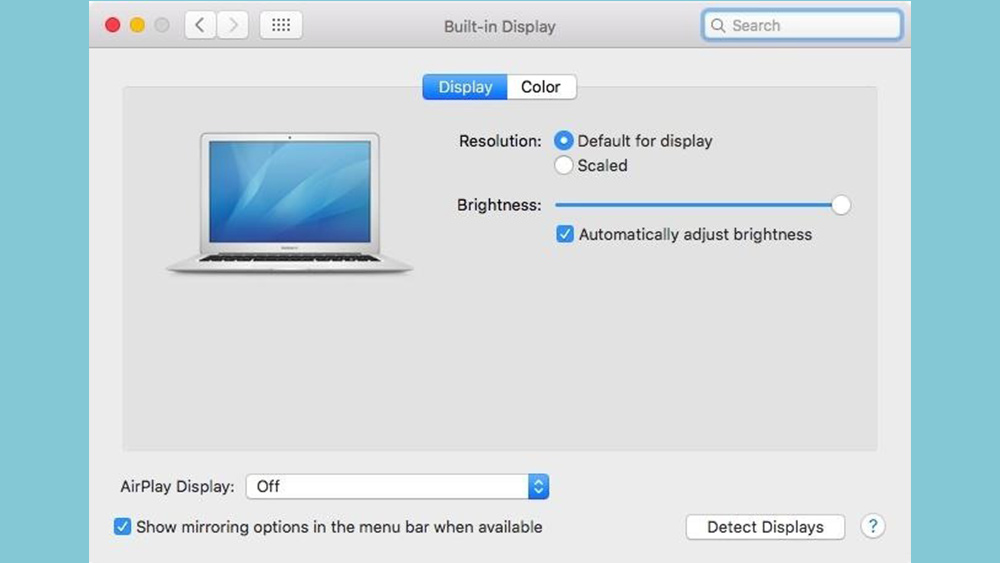
If the external monitor display is still blank go to System Preferences > Displays. You can press the Alt/option key to bring up the 'Detect Displays' button. Click on 'Detect Displays', to prompt your MacBook Pro to recognise the external monitor. See our guide to how to connect a monitor to MacBook Pro for more details on using an external monitor and see our guide to the best dock for MacBook Pro to expand your connection options.
Read more:
- The best Apple mouse deals
- The best MacBook Pro accessories
- The best keyboards for Mac

Thank you for reading 5 articles this month* Join now for unlimited access
Enjoy your first month for just £1 / $1 / €1
*Read 5 free articles per month without a subscription

Join now for unlimited access
Try first month for just £1 / $1 / €1
Related articles
williamsackelvel60.blogspot.com
Source: https://www.creativebloq.com/how-to/fix-black-screen-on-macbook-pro
0 Response to "How Easy is It to Replace a Macbook Pro Screen"
Postar um comentário